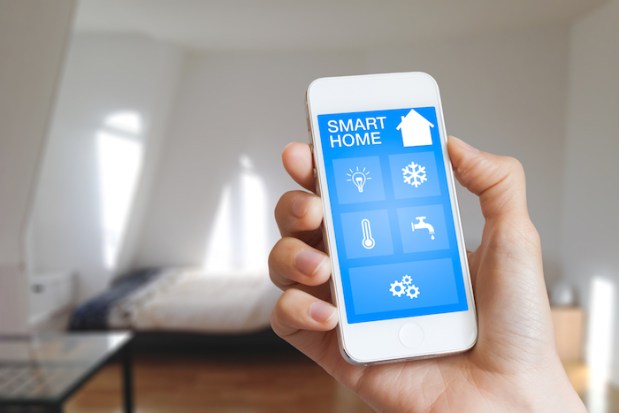Smart Appliances Find A Home Among Consumers

“Smart House” used to be just a Disney Channel Original Movie; perhaps you watched it back in good old 1999, or remember having kids who watched it.
After losing his mother to an ice skating accident, the 13-year-old hero wins his family a house that is fully automated by an artificial intelligence (AI) named Pat. Thanks to some reprogramming efforts by the protagonist, Pat soon becomes too intelligent and morphs into an overbearing mother figure who eventually traps the family inside, deeming the outside world too dangerous.
Of course, the movie has a happy ending: Pat lets the family go, and the hero finally confronts his feelings about his mother’s death.
Nearly 20 years later, however, the idea of a fully connected smart home is no longer just a science fiction premise for a kids’ movie. Many American homes contain at least one smart appliance, if not more — all of which must communicate with each other and/or the homeowner’s smart device in order to be worth the investment.
We’ve all heard of smart speakers — Amazon Echo, Google Home, Apple HomePod — but what about these other innovations, which are not dedicated devices but have connected capabilities baked right into the appliance? Innovations such as…
LG Everything
LG, the South Korean tech giant, is leading the charge when it comes to smart, connected devices and appliances for the home. The modern consumer’s most precious commodity is time, and LG has seen the light: Consumers will pay good money to anyone who can give even a small piece of that commodity back to them.
Knock twice to look inside LG’s futuristic fridge without letting out any of the cold air inside. This LG appliance features a door that is actually a window/screen, so while it appears to be made of regular, opaque stainless steel at first glance, the smart door turns translucent when users knock on it.
The capability saves energy by keeping cold air inside while you work on your grocery list. The fridge is even smart enough to know which items have run out or expired and need to be restocked. Users can also bring up recipes right on the door.
The refrigerator interfaces with Amazon’s Alexa and the Google Assistant — in fact, the South Korean tech giant is even offering to give customers a free Google Home if they buy one of its WiFi-enabled home appliances. That means that, once you’ve looked through the magic door to see how much yogurt is left, you can simply ask Google or Amazon’s Alexa to add it to your shopping list.
The company has a dishwasher that sends users a smartphone notification when it’s done cleaning dishes. Its smart vacuum bot not only obeys remote commands to clean specific rooms; it also sends an alert if one of its cameras picks up movement while the owner is out of the house.
Between these and the company’s smart washers, dryers, ovens and other appliances, LG has a total of about 90 smart appliances on the market today, all of which can be controlled from the user’s hub of choice, whether that’s the Google Assistant via Google Home, Alexa via Amazon’s Echo, or one of these assistants via their mobile app on Android or iOS.
Plus, LG’s own SmartThinQ platform serves as a bridge to incorporate other home automation devices, such as Zigbee light switches, power sockets and blind controllers. The platform also frees consumers from having to make a lifelong commitment to any one smart speaker, since it plays nice with all of the above.
Kenmore
Another big player getting into the smart home race is Kenmore. Sears began selling smart Kenmore air conditioning wall units through Amazon over the summer and is soon adding larger appliances, such as washers, dryers and refrigerators to its offerings, according to the Orange County Register.
Kenmore’s app notifies users if the refrigerator door has been left open and powers remote control of the wall unit air conditioners. Users can also make adjustments by asking Alexa.
The option to buy Kenmore appliances (both smart and standard) on Amazon rolled out to Southern California first, due to strong brand recognition in the area. Availability is expanding through West Coast and Midwest markets this fall and should go nationwide early in 2018.
Miscellaneous
Then, of course, there’s Nest, the Google-owned smart thermostat; and the GeniCan reader that scans items as you throw them out and adds them to your shopping list; and the robotic lawn mower that trims grass by following a perimeter wire around your property and the Ring Floodlight Cam that isn’t just a motion detector, but also notifies users when it has been triggered and enables remote control via mobile device. That’s just to name a few.
With these electronics around, how long will it be before the concept of a “smart home” truly encompasses the entire home? Probably not long at all. In fact, according to The Boston Globe, analysts are predicting that, in five years, finding a dumb appliance will be harder than finding a smart one. Let’s just hope that, when we get there, the smart house doesn’t try to decide what’s best for the people living in it.
